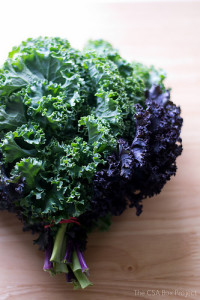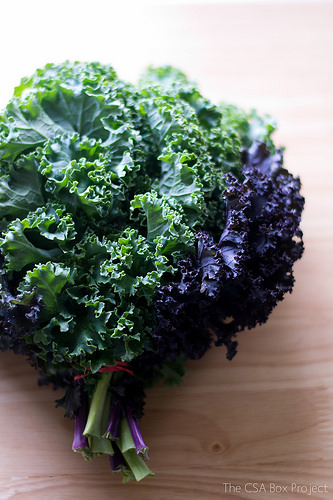Short Answer:
Yes, Kale is Paleo!

All About Kale
Kale is a green leafy cruciferous vegetable that belongs to the Brassica family, together with cabbage, broccoli and Brussel sprouts. It has caught a wide attention due to its health benefits.
Kale is believed to have been brought to Europe around 500 B.C. by groups of Celtic wanderers. The sweetest kale can be bought during the mid season of winter through beginning of spring.
There are different types of kales: they are the curly kale, ornamental kale, red Russian kale and dinosaur kale which differ from size, texture and taste.
- Curly Kale – This is the most common among the varieties of kales found in grocery stores or supermarkets. Curly kale is usually bright or dark green in color and has ruffled leaves and fibrous stalks. It has a pungent flavor with peppery and bitter qualities.
- Ornamental or Redbor Kale – It is the type of kale that is dark in color. The leaves may be green, purple or white. Redbor Kale has a mellow flavor and tender texture. While this kale is an edible one, it is also considered as an ornamental plant.
- Dinosaur or Lacinato Kale – Dinosaur kale features dark blue-green leaves with a slightly wrinkled and firm texture .It has a more delicate taste (deep and earthy flavor) and sweeter than the curly kale. Its leaves are tall and narrow.
- Red Russian Kale – This type of kale has a flat fringed leaves that is similar to the big oak and arugula leaves. The leaves may have a red tinge and it has a delicious flavor that can be described as sweet, mild and a bit peppery. Its stems are a bit tough and woody fibrous that may be difficult to swallow so it is recommended to be removed prior to cooking.
Health Benefits of Eating Kale
Kale is known to be a powerhouse of vitamins, minerals, and disease fighting antioxidants. All its varieties offer an incredible amount of health benefits. Below is a list of benefits that can be acquired from eating kale:
- Kale is filled with powerful antioxidants and phytochemicals such as sulforaphane, carotenoids, luteins and flavonoids to help protect against various cancers. Sulforaphane can reduce the risk of gene-based cancers affecting the breast, colon and bladder. Flavanoid is thought to reduce ovarian cancer. Finally, Carotenoid and luteins can prevent the eyes from having cataracts.
- Kale is an excellent source of vitamin A which is important for lung, eye and skin health, vitamin C for immune system and vitamin B6 and manganese for fat metabolism. Vitamin K which is abundant in kale can regulate the body’s inflammatory process. This can help minimize the risk of having chronic inflammation and other association health problems. In addition to this, kale offers fiber, calcium and vitamin E. Kale is high in iron which is good for proper liver function.
- Glucosinolates are present in kale which when digested, become cancer preventive compounds.
- Kale has a cholesterol lowering ability that provides cardiovascular support, whether it is raw or cooked This ability improves when kale is steamed
- Kale helps too in the detoxification process of the body with its high sulphur content.
- Fiber in kale aids in digestion. The isothiocyanates (ITC) made from the glucosinolates of kale protects the lining of the stomach, keeping the good bacteria in it.
Storage and Preparation of Kale
The best and most recommended kale are those with dark green, firm leaves, with moist hardy stems. It should be kept in a cool environment to avoid it from wilting. If you wish to store your kale in your refrigerator, wrap it in a damp towel and keep inside a sealed storage bag before putting in your refrigerator’s crisper. The longer the kale is stored, the bitter the taste will be.
To prepare kale, rinse the leaves in cold running water. Cut it to desired shape and size. For quick and even cooking, chop the leaf portion to ½” and the stem to ¼” length. To get the most benefits from kale, let it sit for around 5 minutes prior to cooking. Adding some lemon juice to it can enhance its phytochemical concentration.
Steaming kale is recommended for maximum health benefits and flavor.
What Experts Say About Kale.. Is It Paleo?
“Of particular note, kale and its cruciferous cronies contain a number of phytochemicals thought to reduce the risk of cancer, including sulforaphane, which has been shown to reduce the risk of gene-based cancers affecting the breast and colon, and isothiocyanates, which reduce the risk of bladder cancer”. – Mark Sisson
“The absorption rate from brassica vegetables (e.g. Kale) is slightly higher than from milk and as so (also they have numerous health benefits), we advise the daily intake of these foods.” – Dr. Loren Cordain
Click here to see what other vegetables are Paleo.
All you ever wanted to know about Kale and Paleo
The Paleo Diet. How to Get Enough Calcium
http://thepaleodiet.com/paleo-diet-q-a-calcium-from-where/
Mark’s Daily Apple. http://www.marksdailyapple.com/kale/#axzz3VNXxT4vB
http://www.marksdailyapple.com/kale/#axzz3VNXxT4vB
The Paleo Diet. Easy Baked Kale Chips
http://thepaleodiet.com/easy-baked-kale-chips/
Robb Wolf. B’s please with my kale
http://robbwolf.com/2011/12/15/bs-please-with-my-kale/
Paleo Leap. Kale Chips
http://paleoleap.com/kale-chips/
Paleo Parents. Crazy for Kale
http://paleoparents.com/featured/crazy-for-kale-2/
Chris Kresser. RHR: Vegetables—How Many to Eat and What Kinds
< href=”http://chriskresser.com/vegetables-how-many-to-eat-and-what-kinds”>http://chriskresser.com/vegetables-how-many-to-eat-and-what-kinds
Deliciously Organic. Why You Shouldn’t Eat Raw Kale and the Perfect Green Smoothie Recipe
http://deliciouslyorganic.net/green-smoothie-recipe/
Paleo Eats & Treats. A Month of Paleo: Kale Recipes
http://paleoeatsandtreats.com/kale-recipes/#sthash.kh40Vc3P.dpbs
Web MD. The Truth About Kale
http://www.webmd.com/food-recipes/kale-nutrition-and-cooking
The World’s Healthiest Foods. Kale.
http://www.whfoods.com/genpage.php?tname=foodspice&dbid=38
Did we miss anything?
Comment below and let us know what you think. Do you agree with our conclusion?
photo credit: Kale – Week 6 | The CSA Box Project

